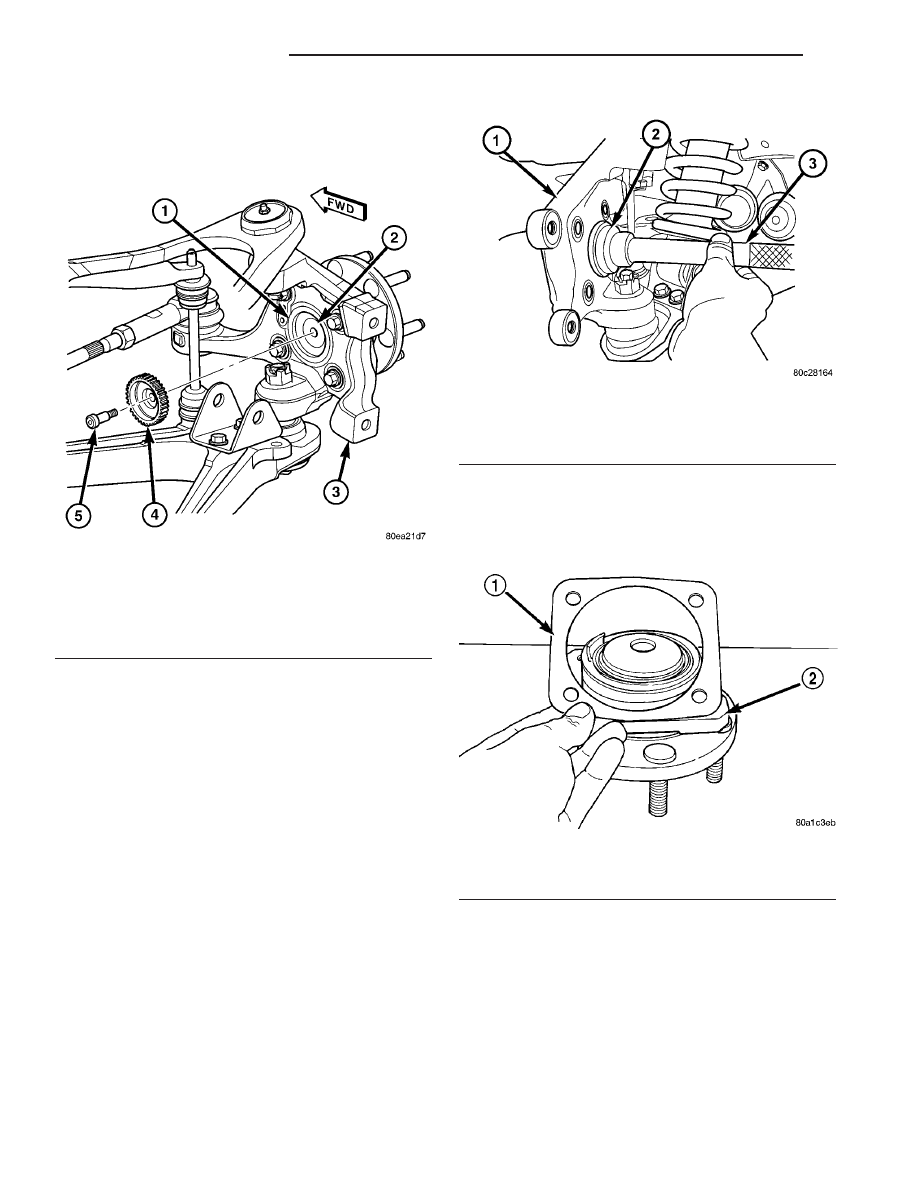Dodge Viper SRT-10 (ZB). Manual - part 9

(5) Using hex wrench or driver socket, remove bolt
retaining ABS tone wheel to hub and bearing (Fig.
11).
(6) Remove ABS tone wheel.
(7) Remove nut securing outer tie rod to steering
knuckle.
(8) Remove outer tie rod from steering knuckle
using Puller, Special Tool C-4150A (Fig. 7).
(9) Remove four mounting bolts, then hub and
bearing assembly from steering knuckle (Fig. 4).
(10) Using an appropriate tool, remove tone wheel
seal from knuckle.
INSTALLATION
(1) Attach Installer, Special Tool 6573, to end of
Drive Handle, Special Tool C-4171 (Fig. 12).
(2) Place NEW seal on end of Installer, Special
Tool 6573.
(3) From inboard side, align seal with seal bore in
knuckle. Slowly tap tool with hammer, driving seal
into place. Stop when tool bottoms against knuckle
(Fig. 12). Remove tools.
CAUTION: A corrosion prevention gasket is used
between the hub and bearing and the steering
knuckle (Fig. 13). The gasket is required to prevent
galvanic corrosion between the hub and bearing
and the steering knuckle. The corrosion prevention
gasket must be used when installing a hub and
bearing in the steering knuckle.
(4) Install a new corrosion prevention gasket on
hub and bearing before installing it in steering
knuckle (Fig. 13).
(5) Install hub and bearing in steering knuckle.
Align holes in corrosion gasket with holes in hub and
bearing, and steering knuckle.
(6) Install four hub and bearing mounting bolts
(Fig. 4). Tighten mounting bolts to 61 N·m (45 ft.
lbs.) torque.
(7) Make sure mating surface of tone wheel and
hub and bearing is clean.
(8) Install tone wheel through seal on rear of
knuckle and against rear of hub and bearing assem-
bly (Fig. 11).
Fig. 11 Tone Wheel Mounting
1 - SEAL
2 - HUB AND BEARING
3 - KNUCKLE
4 - TONE WHEEL
5 - MOUNTING BOLT
Fig. 12 Seal Installation Using Special Tools
1 - STEERING KNUCKLE
2 - 6573
3 - C-4171
Fig. 13 Corrosion Gasket
1 - CORROSION GASKET
2 - HUB/BEARING
2 - 10
FRONT SUSPENSION
ZB
KNUCKLE/ABS TONE WHEEL SEAL (Continued)